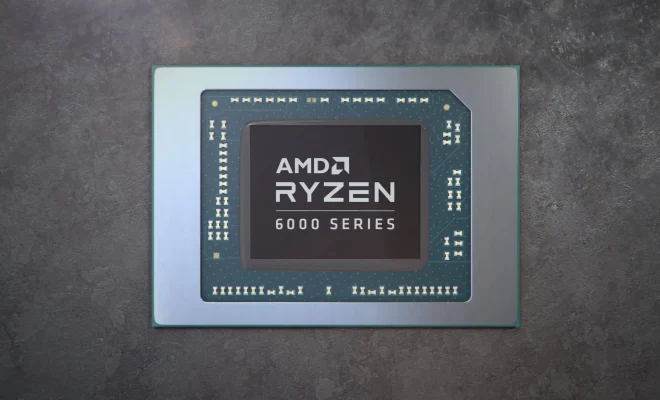AMD Ryzen 6000 U Tested

The AMD Ryzen 6000 U series processors have been grabbing the attention of tech enthusiasts since their announcement. Aimed at redefining the laptop space, these new chips are designed to deliver a powerful performance upgrade and improved power efficiency. We’ve taken a closer look at the Ryzen 6000 U series to provide an in-depth analysis of its capabilities.
Performance Upgrades
At the heart of AMD’s Ryzen 6000 U series processors is the new RDNA 2 GPU architecture and Zen 3+ CPU core design, built on TSMC’s latest 6nm process technology. The combination of these technologies allows for a significant performance boost over existing solutions in the market.
In terms of gaming, users can expect improved frame rates and smoother gameplay across various titles. The RDNA 2 GPU architecture supports DirectX12 Ultimate, Variable Rate Shading, and FidelityFX Super Resolution, providing stunning visuals and faster performance.
The Zen 3+ CPU core design adds to the overall computing power by incorporating features such as increased cache sizes and monolithic L3 cache to enhance application responsiveness and multi-threaded performance.
Efficiency Improvements
One of AMD’s primary goals with the Ryzen 6000 U series was to strike a balance between performance and power efficiency. The use of TSMC’s advanced 6nm process technology lets AMD optimize energy consumption while maintaining high clock speeds.
With Infinity Cache implementation, AMD aims to reduce memory latency while saving power. This feature can lead to efficiency gains without sacrificing gaming or productivity experience in portable devices.
Furthermore, SmartShift technology allows for smart distribution of power resources between the CPU and GPU based on workload requirements. This ensures efficient use of available resources when running demanding applications or games without causing overheating.
Connectivity Features
The AMD Ryzen 6000 U series also brings improved connectivity features to the table. With support for Wi-Fi 6E, Bluetooth 5.2, and USB4, users can enjoy faster wireless connections and enhanced compatibility with next-generation peripherals.
Conclusion
The AMD Ryzen 6000 U series processors seem to be the right step forward in terms of performance and efficiency. Offering substantial improvements across various aspects, these chips are set to redefine the laptop market and subsequently provide users with a better experience when gaming or using productivity applications.
While it remains to be seen how practical this series will be in real-world scenarios, early indications show a promising future for AMD’s newest efforts in the highly competitive processor market.






